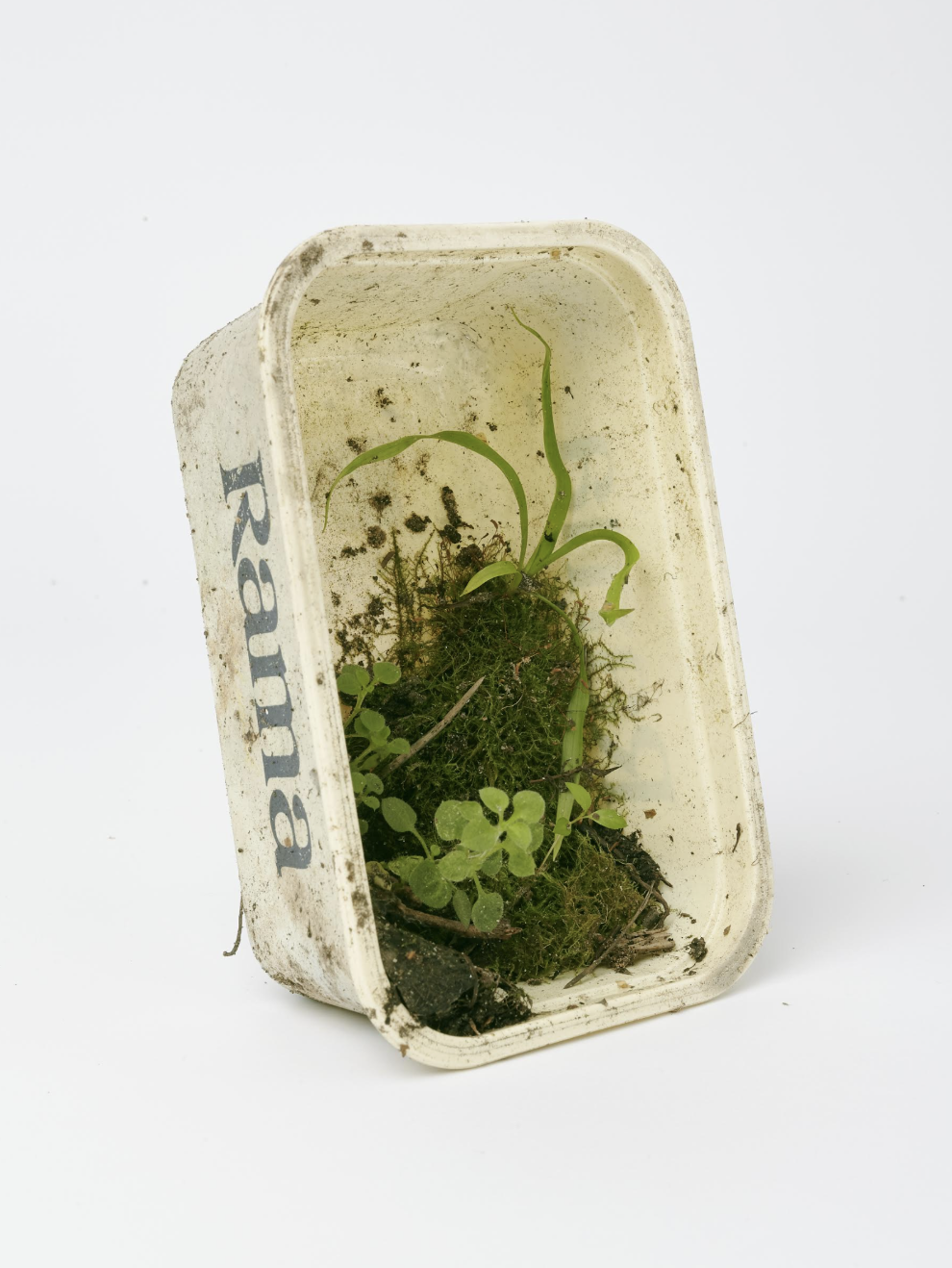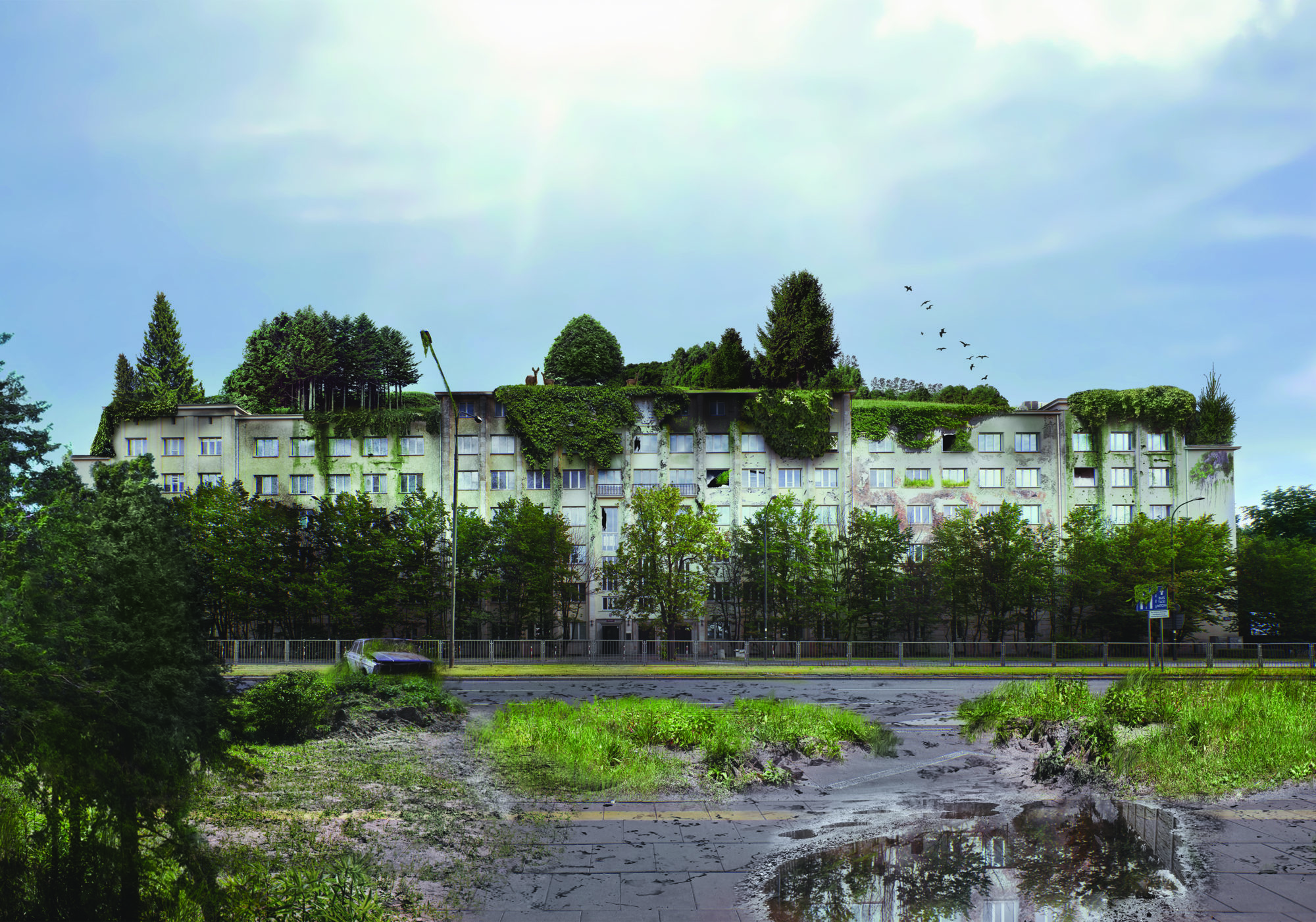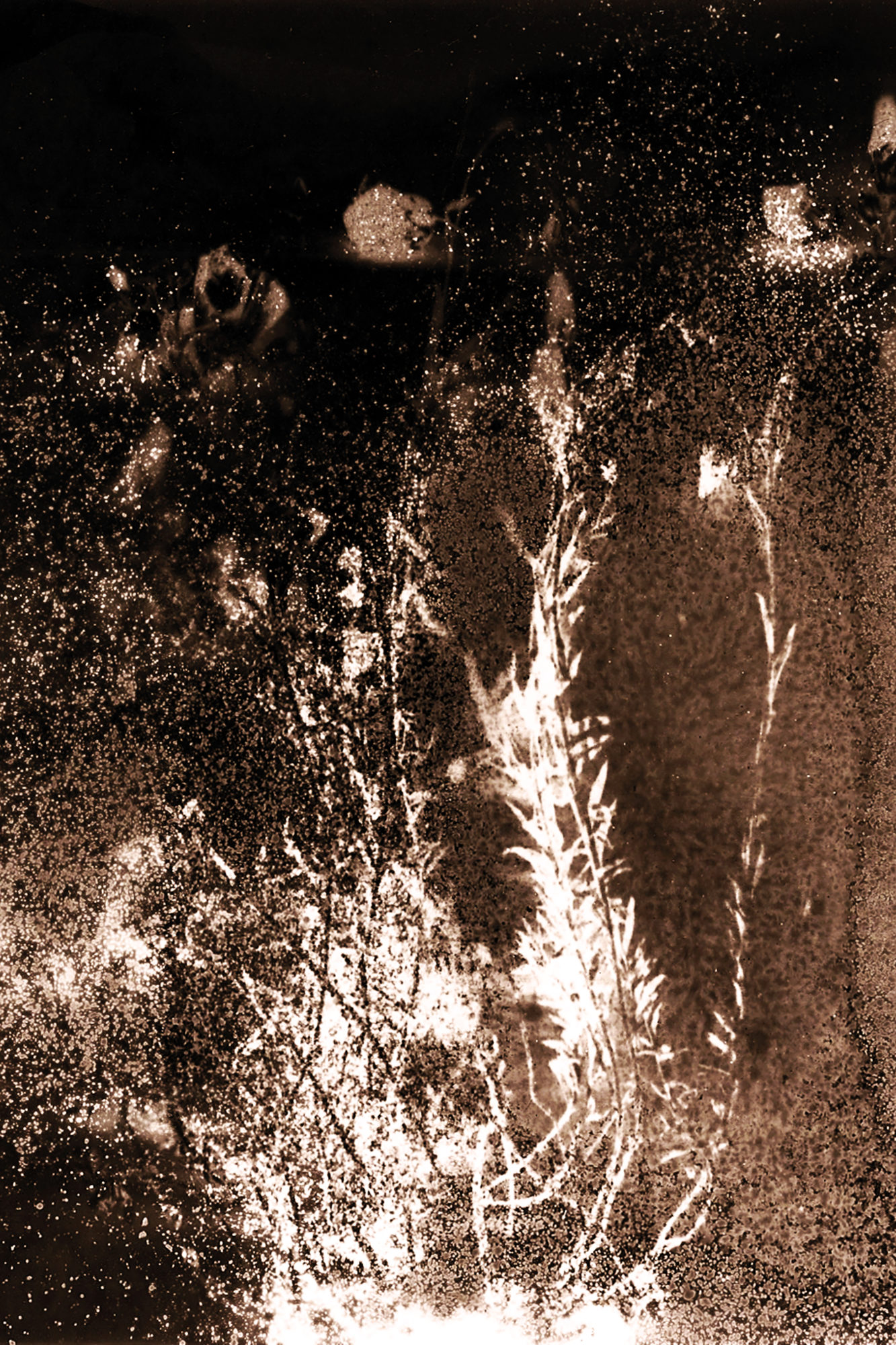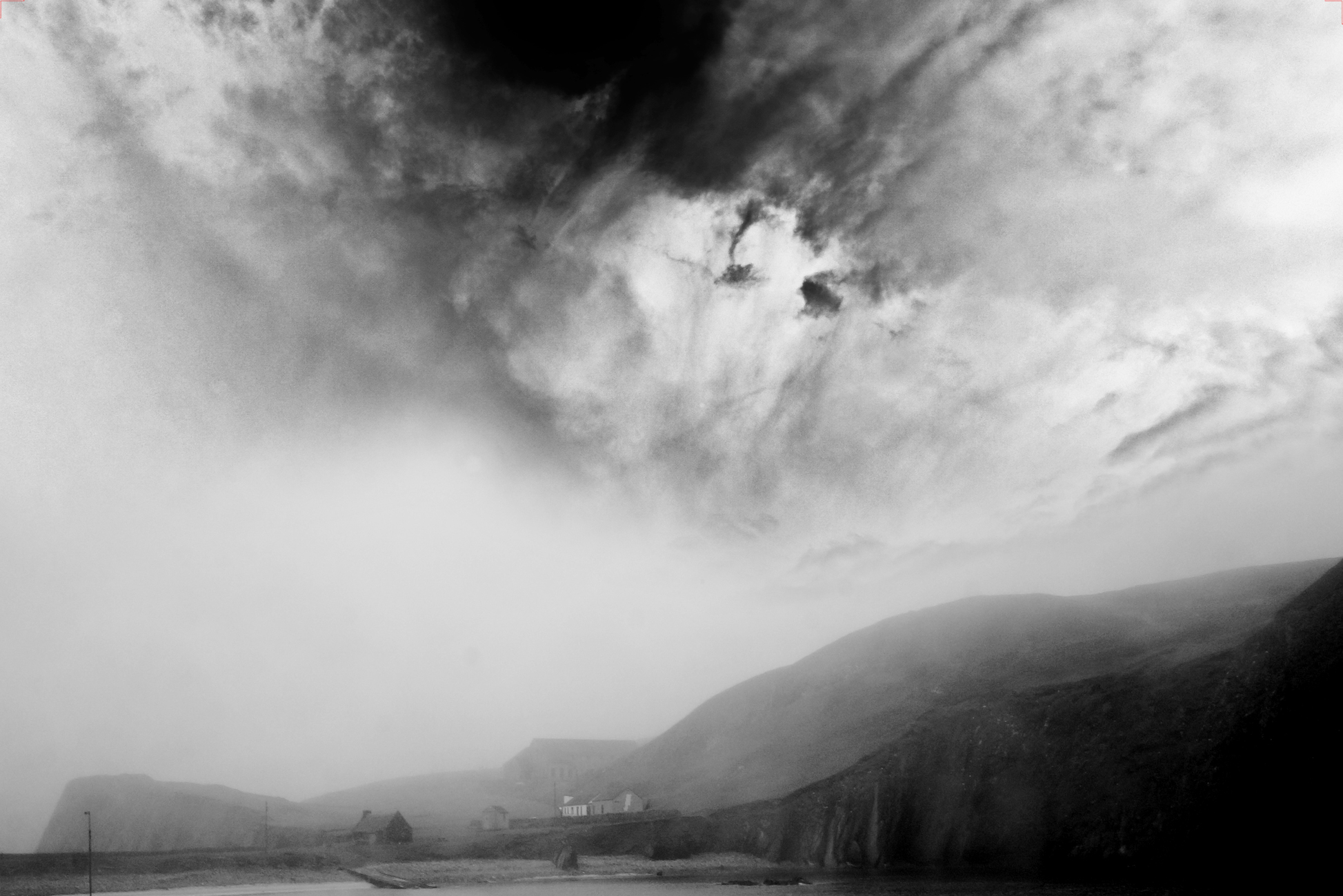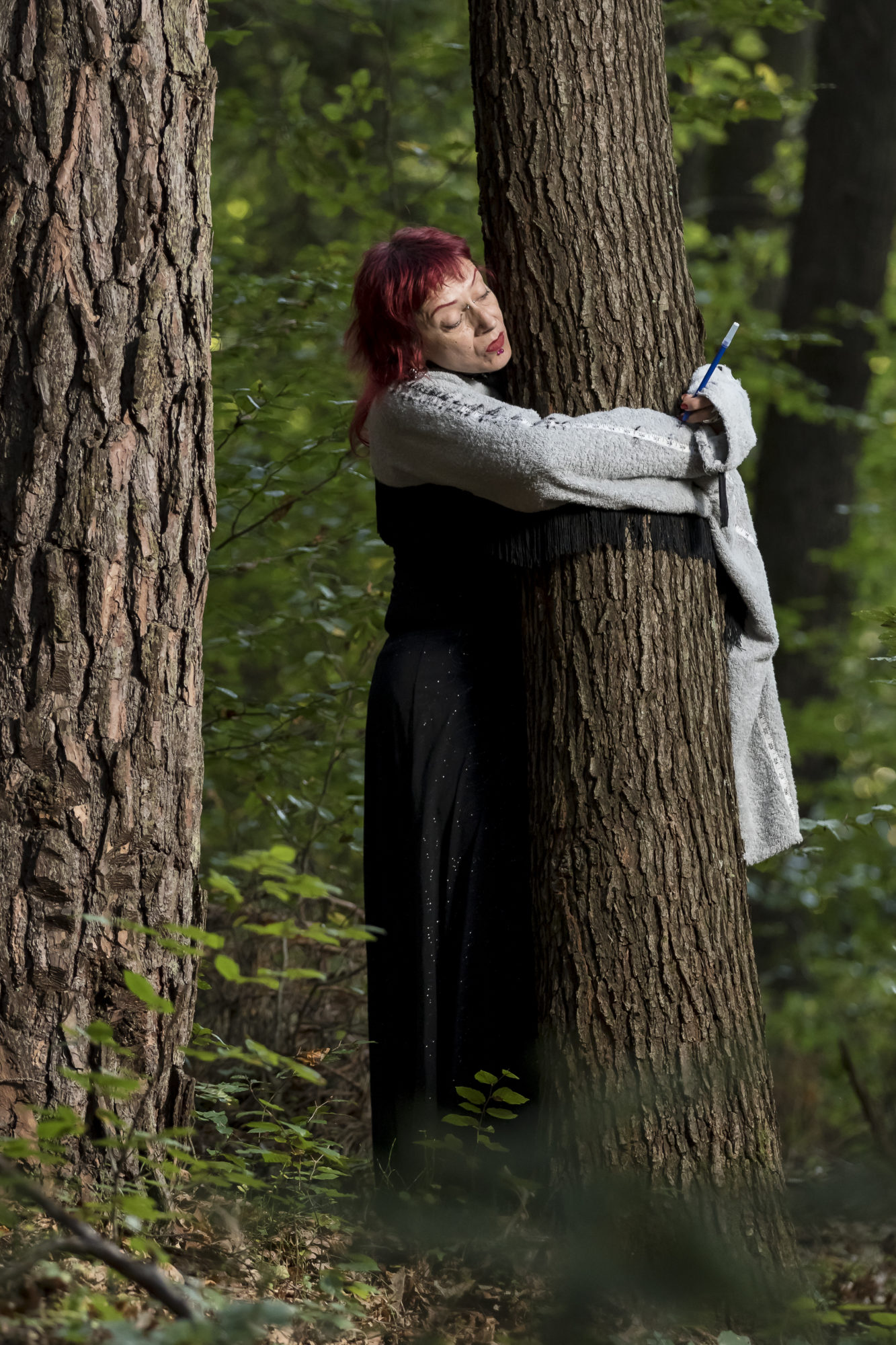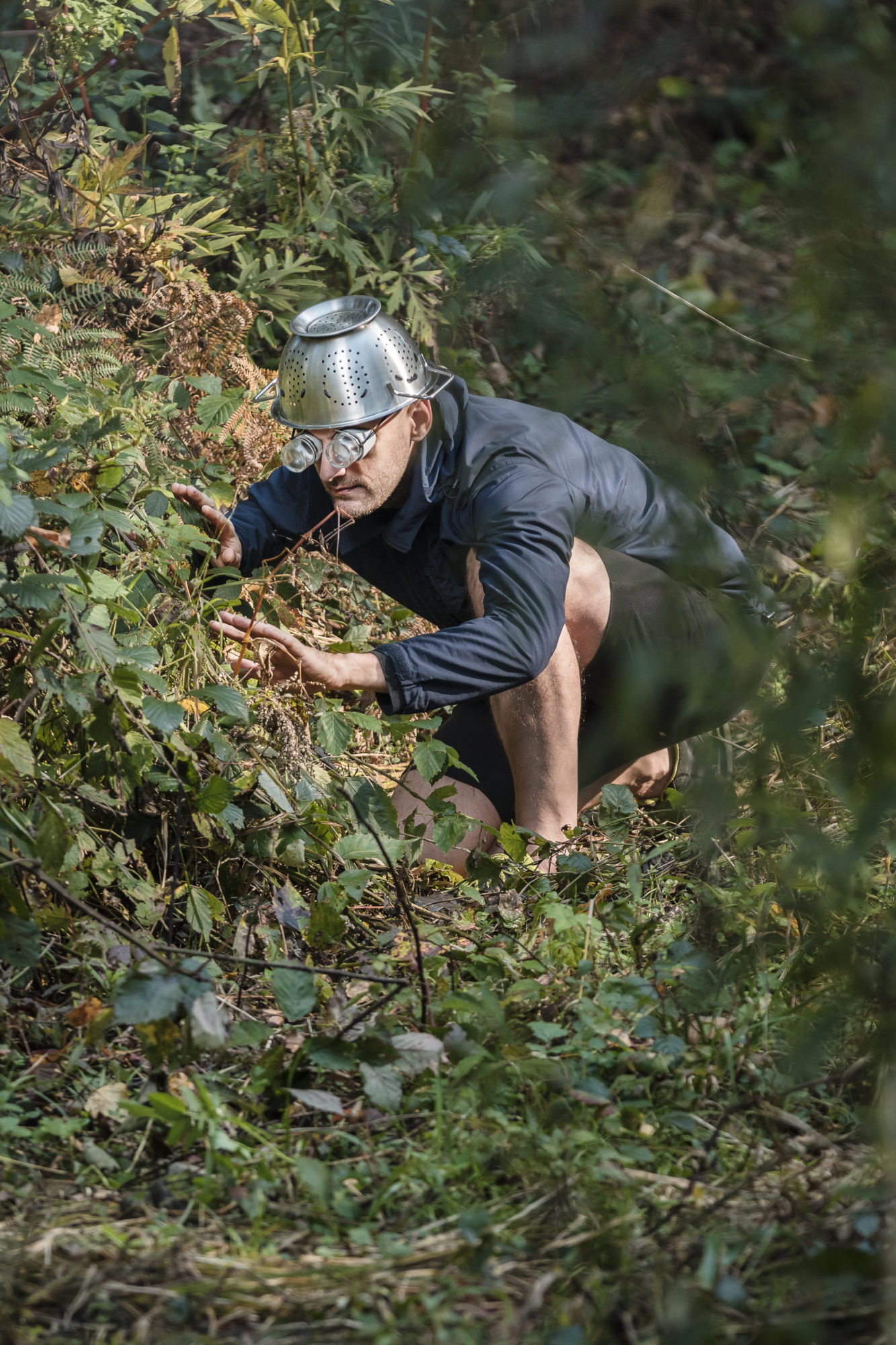A Conversation on Feralizing
Agata Kowalewska: The feral designates a “third space,” it remains in tension with both the domesticated and the wild, and it bears their marks, but it doesn’t belong in either. I understand ferality as a perilous state, often violent and uncertain.
Feralizing doesn’t contain the promise of rewilding, of a return to something that was supposedly better – a kind of pristine, unbound freedom. I think the category is useful because it’s not blind to the division between the wild and the domesticated, but it looks at them through the relations of power.
Diana Lelonek: In Polish, rewilding and feralizing are the same word. They can describe abandoned spaces that people no longer use, environments that grow on post-industrial waste areas.
They are feral through abandonment. These objects stopped being dependent on people. Things like tools, shoes, clothes, things that people stopped using and threw into the forest. Plants and other organisms start using these objects and look for their other functions, styrofoam becomes a rock.
AK: I like to think about your garbage-plants as feral trash, which now exerts a new kind of agency beyond human control, despite trash being the ultimate human creation.
DL: This image comes from my activist practice, it’s a protest against cutting down the Białowieża Forest. It’s a speculative collage of a postapocalyptic future. It’s a building of the Polish Ministry of Environment overtaken by a forest. It’s a vision of the future if the policy doesn’t change.
I dream that one day we can start to understand the best things plants can do, also for us, is to overgrow. And what we need to do is abandon these spaces, step back.
In the feral, abandoned spaces, maybe we can find answers about the future, about how to better live with other species.
What ruderal plants do in abandoned spaces can be categorized as work. But it’s also a rebellion.
Anaïs Tondeur: In French, the term ferality is sometimes associated with marronage, especially when describing feral animals. This metonymy resonates with the maroons – groups of runaway slaves in the Americas.
For the past ten years, I have developed a photographic protocol of attention to feral beings in Chernobyl. This gathering of photographic traces of plants growing in the irradiated soil of the Zone have become a means of noticing, observing, perceiving and giving importance to these mutant beings.
These plants are feral but have also been transformed by other feral agents: the radioactive isotopes present in their milieu of life. The two processes meet in the very body of the vegetal being.
I thus call upon the radioactivity contained in the plant, to compose the photographic imprint. The rayograms are thus the result of the exposure of the plant to light in the photo lab, but also to the cesium 137 in the flora.
Ferality then describes the state of living beings, as well as non-living agents who react to human attempts to transform the earth and escape its conquest. In this context, as described by Anna Tsing, the product of nuclear power plants or the burning of fossil fuels are also feral agents. Radioactive isotopes hold effects beyond those they were designed and promoted to hold. Likewise of other forms of toxic wastes and pollution such as particulate matter and carbon black particles – a feral microscopic dust.
The Carbon Black protocol is an attempt to give a tangible presence to these feral agents, however impalpable. Retracing these particle trajectories over 1350 km, I filtered the particles I breathed, extracted them from the filters of my mask to turn them into inks that I then used to print the images of the sky where I encountered them. In a way, it’s a form of domesticating these particles.
We can, for example, consider human domestication of fire. By the use of hearths, humans confined this element in a circumscribed space. Fire then becomes dependent on us for burning. It stays alive as long as we maintain it. Later, with the industrial revolution and the invention of the engine, this relation was amplified.
However much fire allowed us to develop industries, heat ourselves or cook food, it has also covered our interior dwellings as well as our lungs with soot. There is always a shadow in the useful work of fire, as anthropologist Marc Higgin reminds us: A shadow that represents our involuntary immersion in the environment we are busy transforming. These shadows are emblematic of human attempts to master the world. We, humans, also become a repository for these feral agents, as they sediment and find their dwelling in our own bodies.
Špela Petrič: Feral phytocracy is a fabulative expedition into an area with significant plant presence. It’s convoluted, but not necessarily unorganised.
What is feral doesn’t have to be formerly domesticated, but can be that which is in excess, which cannot be commodified. Rather than keeping the nature-culture distinction, it’s a particular relation. A judgement call. If it’s appreciated – it’s wild, if not – it’s feral.
Rather than discussing naturecultures, I’m interested in what’s accepted, what’s rejected.
Ferality as a concept is extremely anthropocentric, it has very little to do with the processes it’s describing, but all to do with us, humans, it’s like naval-gazing.
AK: But that’s where I think it has power, because it keeps an eye on the human, so it works like a lens. Whereas wild seems to suggest being able to find a place that is devoid of human influence, the feral is always about pollution, unwanted effects, it maintains attention on that.
ŠP: I do like what is hiding behind this term, precisely because of this valence of negativity, of that which escapes control.
From the perspective of deeper time and deeper space, in which people are yet another occurrence, these processes we call feral usually appear in transitional spaces, in absence of something. In this transitional period before the environment becomes super-abundant and stable. If there is no disturbance, diversity seems to ‘come naturally.’
It’s a relational term, always in relation to this ‘other,’ it’s an aesthetic judgement. The great Pacific Garbage Patch is now a feral occurrence, it relates to our consumption. And yet in 500 years all this plastic will have already been used, transformed, incorporated.
It’s never going to remain this inert material, it’s a source of energy, bacteria will be the first to know how to use it. If the ruderal space remains uninterrupted it will become this vivacious ecosystem. What we would aesthetically judge as feral usually takes over periods of transition, when those redundant relationships have not yet had time to develop. But they will unless a continuous disruption is present.
In my work with plants, I have come to see them as the opposite of meek and weak; in fact they are incredibly potent, and definitely turn feral when given the right circumstances. A certain part of our society – farmers, gardeners, the people who maintain infrastructure and so on – invest huge efforts to keep undesirable plants at bay.
So how do we position our relationship to plants in order to change this anthropocene-ic worldview, to change the apparent balance of power when humans as “masters of the environment” are catastrophically failing? For me one of the ways of doing this is to change the mindset: I am humbled by plants’ resilience, adaptability, seeming resurrection and their capacity to create conditions habitable for other creatures. Consequently, I see feral landscapes as an expression of plants’ power, as a reminder that we are blinded by our technological prowess.
If ferality is anthropocentric, what kind of qualities are we ascribing to that which is feral and for which purpose? What is the hope, what will ferality remedy?
AT: Are there limits to these possibilities opened up by ferality? Certain human activities hold such consequences on the power of the living itself, it is annihilated.
Since 1986 Chernobyl’s explosion, the bacteria from the Red Forest no longer decomposes organic matter. They were wiped out by the explosion. In these spaces, no more life, bacterial or vegetal, is possible.
AK: So ferality is an intermediate state, one that is not fundamentally desirable, but is linked to a certain hope for a better future of a vivacious, diverse ecosystem. It’s not an end-state, but just where you landed. Feralizing is escaping what seems inevitable.
Accepting that feralizing is a complex and problematic term, if we indulge it for a moment – what would it mean to feralize an artistic practice, or thought, or spirituality? Would it even mean anything? If there is no hope of escaping to some kind of idealized past, but you have to go through this third space first.
ŠP: I think that objectively it can be quite difficult to distinguish a feral art practice from art practice in general. Does feralizing entail imbuing the work process with feral actors or can a methodology be feral as well? And in the second case, what borders of palatability need to be transgressed to make it so? ? In the project, “Deep Phytocracy: Feral Songs,” I used the term as an aspiration. What I made was a cabaret of tools, taken from radically different contexts of plant-people relations, but remixed into low-tech devices which participants of the performance use to explore naturecultures. Ferality as a framework allowed the presumptuousness necessary to take little bits of this discourse, some pagan traditions, and a little bit of industry, a little bit of what I read on the news that day, and recombine it. Instead of being intimidated by the body of knowledge that surrounds these approaches, I embraced the superficiality of the amateur and played with the spotty knowledge from my research. In this context, feral methodology invoked appropriation out of context, without knowing ahead of time about the consequences or traps as an amateur. As a fool. As means of escaping determining contexts and as an act of playful resistance. In this sense, I understand ferality as an aspirational notion.
DL: When I was working on the Centre for the Living Things, it was a kind of feralization of an official research institution by my Centre. The most interesting part of this project was the collaboration with the Botanical Garden. I asked them if I could use an abandoned greenhouse at the back of the garden. I like to think of it as hacking, that I hacked the Botanical Garden. But I think it can also be interesting to think of it as feralizing. The greenhouse was already abandoned, so it fit perfectly. The Centre for the Living Things was made more real because it was inside a real research center.
I suggested their garden doesn’t really represent the real world, and that they could open a new department dedicated to garbage plants. I then moved my collection to the garden, and the gardeners started to care for the garbage plants. These rubbish-plant hybrids started to be treated the same way as other plants there. I suggested they dedicate a department to environments created by these feral agents, environments of post-coal slagheaps, environments of wastelands, environments of poisoned water, etc. They agreed to move the Centre for the Living Things to the official part of the garden, which is open to the public.
And then I opened a new department dedicated to garbage-plants. I made cards exactly as the ones they had in the rest of the garden. I even put a pin on Google Maps for the Centre. The Botanical Garden in Poznań has a very traditional approach to plants, so it was difficult to explain to them that this wasn’t just an artistic project. I was also looking for new classifications for these garbage-plants. So, I started to call them post-adidas habitats, polymer habitats. One scientist found a very rare kind of moss on a piece of styrofoam that I found. This is also a question, if you find a piece of styrofoam in the forest, covered by this protected species, form the Red List, what should you do? Leave the trash in the forest, or throw it away? This shows that traditional thinking about nature doesn’t apply here. In the botanical atlas it says this kind of moss usually grows on stones and rocks next to a river. So maybe we should extend this classification: moss also likes to grow on styrofoam that’s next to a river.
So, this is how I “feralized” the traditional classification, hacked this institution a little bit. Unfortunately, the head of the Botanical Garden asked to close the exhibition after a year. So, they never understood that I wanted to give them my collection to have in their garden. I think this kind of department should be in every botanical garden in the world, it’s very important. Now I’m looking for a new place for my Centre.
AT: It is stirring to think about an art practice as a feral process. In my work, I quest, through the invention of protocols of attention, to deconstruct networks of relations shaped, for centuries, through a sense of domination, conquest and mastery. I try to give attention to entities that have been neglected, invisibilised, or which simply escape our senses.
I am thus engaged in an exploration of other forms of relations to the world by means of inventing other stories and other modes of perceptions. To think the world together, as a network of encounters of the cycles of human existence and that of other agents of the biosphere and beyond. Thinking about our relations to the world to better look after it, after us. The French philosopher Bernard Stiegler draws this precise connection between thinking “penser” and care “panser” as a taking care of what we inherit from the past and carry it forward into the future.

